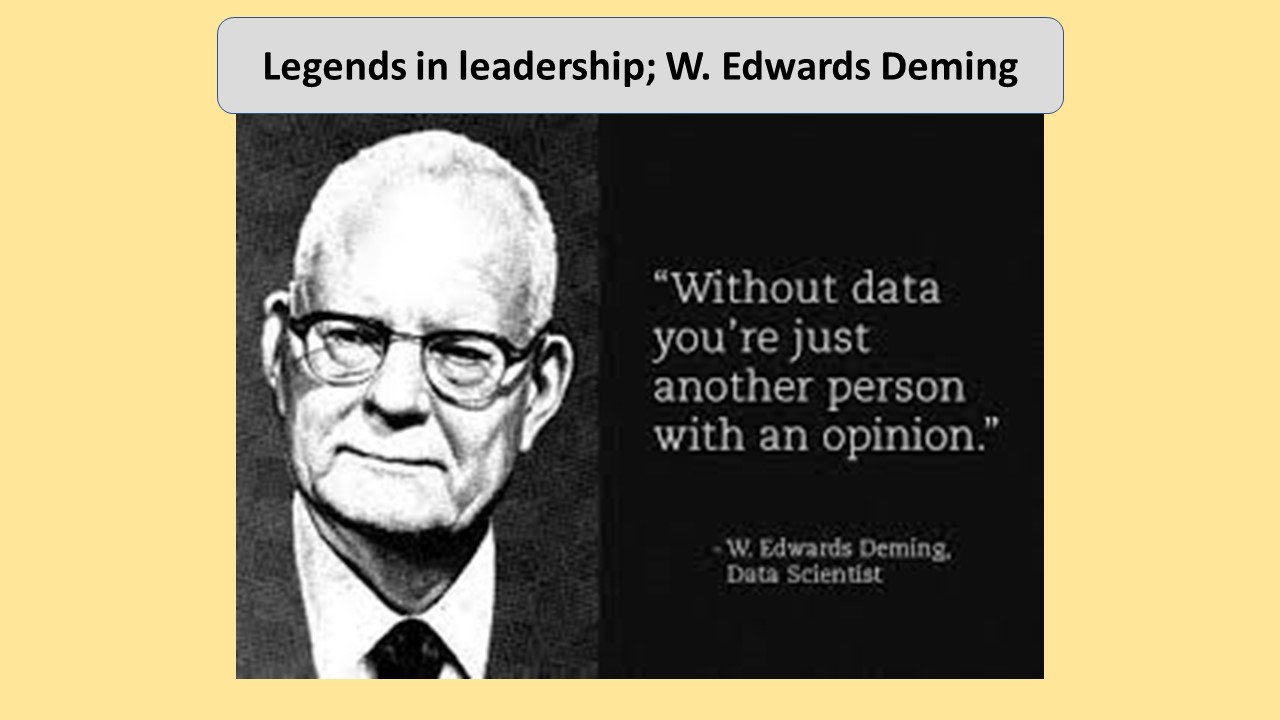By Thomas Davis, CRNA, MAE, Lt. Col. (ret)
Follow @procrnatom on twitter
Edwards Deming was an impactful thinker in transforming post WWII Japan into an industrial power that would challenge the rest of the world for a share of the international marketplace. Deming did not have a background in business or economics; rather, he was a statistician who knew how to gather and interpret information. Immediately after the war, the US government sent Deming with a group of advisors to assess the damage and to assist in the post-war rebuilding of the country. When the Japanese business and manufacturing communities needed advice, Deming evaluated the numbers and shared what the statistics revealed. Based on the willingness to take advice from Deming, the Toyota Corporation jumped to world prominence. From the work of this America statistical thinker, the Toyota style of management emerged and has been adopted by many healthcare organizations throughout America. Here are some lessons and suggestions for implementation from this month’s Legend in Leadership, W. Edwards Deming.
- Have a purpose Before you embark on a project, Deming advises taking time to identify what it is that you are trying to accomplish. Most large organizations have a vision for the success that they are working to achieve. Aligning your team with the vision provides a sense of direction to guide decision-making. In addition, your team can create its own vision with the proviso that is in alignment with that of the organization. Once established, constantly remind your team of their shared goal and when a project arises, develop a plan that moves your team and your organization toward achieving the vision.
- Stop inspecting Inspection creates a focus on defects and shifts attention away from the goal of zero defects. In healthcare, many safety initiatives spend too much time discussing the problem and not enough time discussing ways to create a new workflow that is free of glitches. Rather than inspecting, spend the time looking forward with the intention of designing a system in which it is not possible to create a defect.
- Eliminate complacency Whatever is done today may not be effective tomorrow. Don’t bask in success; instead, remain aware that victory is temporary and motivate your team to constantly seek ways to improve the quality of the service that you provide. With the desire to consistently make things better, you establish a dynamic environment wherein creativity is encouraged, and the team stays one step ahead of competition.
- Promote staff development Foster education and self-improvement among your team to build knowledge, improve skills, and further engagement. Mentoring provides a unique opportunity for both the mentor and the mentee as ideas are shared through two-way dialogue and the networks of each person are expanded. Often, a coaching/authoritarian style is effective in mentoring relationships.
- Be a leader Deming advises, “don’t supervise, be a leader.” Connecting one on one with each person on your team satisfies the requirements for Maxwell’s level 2 leadership; however, going to the front and working shoulder to shoulder to increase team productivity earns respect and takes you to level 3 leadership. Stop telling others what to do, be a working partner and show them the way.
- Work collaboratively At the heart of Deming’s teaching is collaborative work in an environment free from fear of fall-out. Within the Toyota model, barriers between work teams are torn down and people talk directly to those with the information that they need rather than sending messages through established conduits.
- Make quality job one Coming full circle, the purpose of the organization must include delivering a product that is free from defects. Quality must be at the front of each team member’s mind and the basis for creating a process that ensures safety, satisfaction and maximum outcome for each of our clients. At each team meeting, openly discuss the reason the company exists, what it is trying to accomplish, and the role each person plays in achieving the goal.
Seventy-five years ago, W. Edward Deming disregarded the wisdom of Harvard Business School and recommended a plan for manufacturing that he knew was statistically correct. At the heart of his plan was collaboration among workers and a focus on the desired outcome of delivering a defect-free product. Follow his sage advice and adopt a motto that continues to survive the test of time: We deliver healthcare defect-free.
Tom is a noted author, speaker, educator and clinician. Join Tom the second Tuesday of each month on the Leadership journal club webinar

